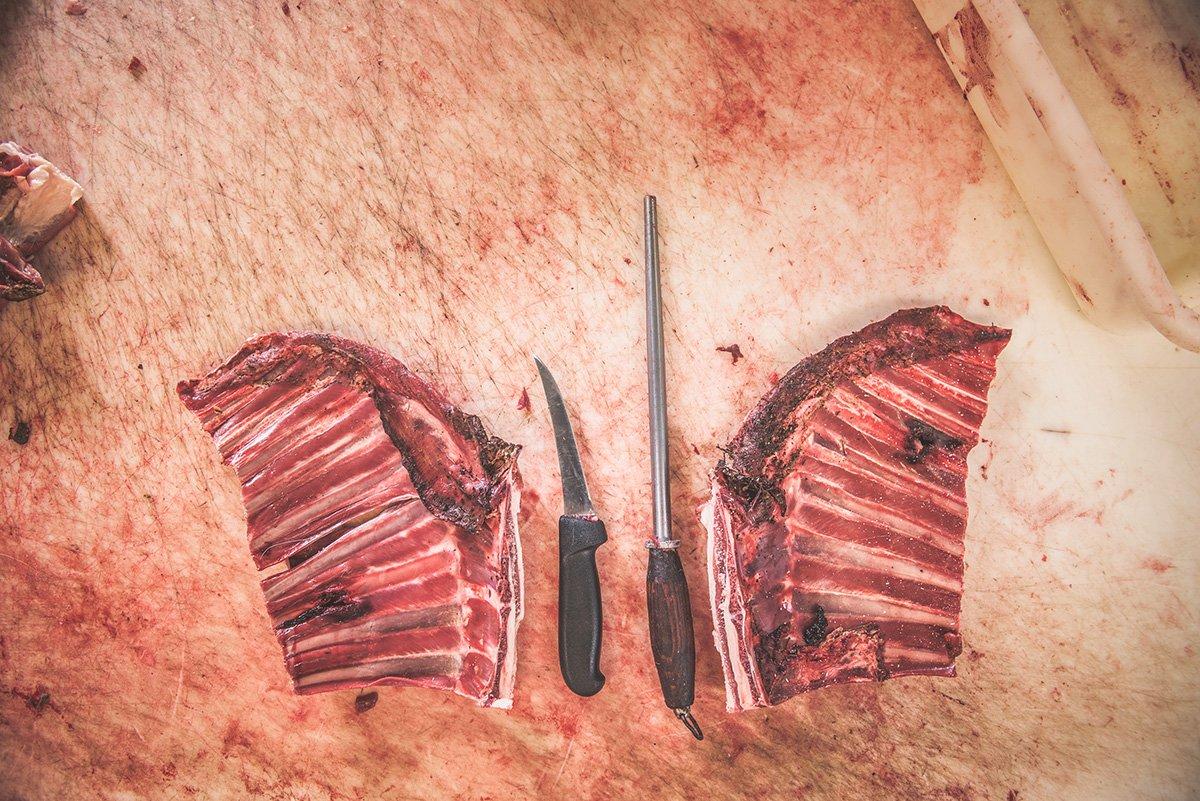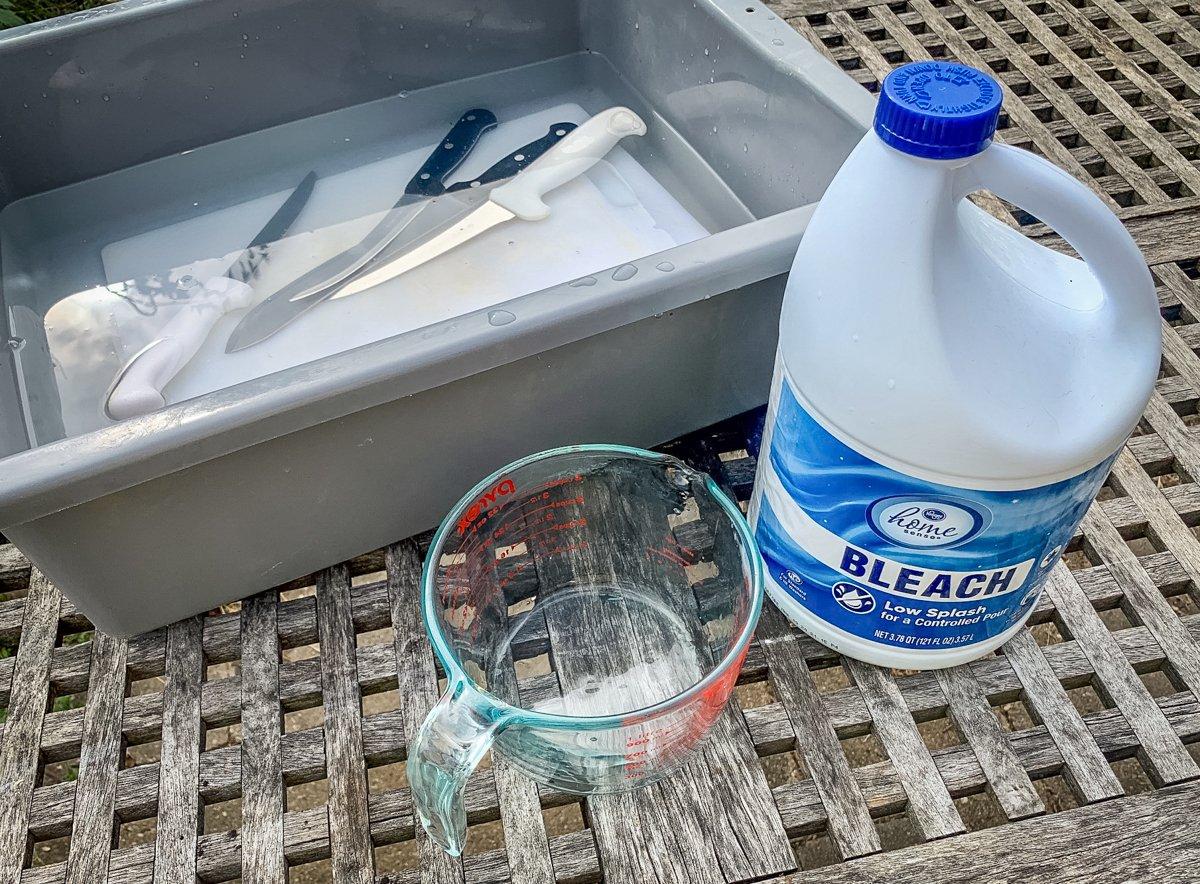Butchering venison in a CWD-positive area? New research shows the best way to sterilize your tools to prevent disease spread
For a lot of hunters across the country, Chronic Wasting Disease (CWD) is on our minds as we start a new fall season. Documented in whitetail, mule deer, moose, elk, caribou and other cervids, CWD is a neurological disease that produces small lesions in brains of infected animals. CWD is classified as a transmissible spongiform encephalopathy (TSE), and is similar to mad cow disease in cattle and scrapie in sheep.
CWD is spread by proteins (prions) between animals through body fluids like feces, saliva, blood or urine, either through direct contact or indirectly through environmental contamination of soil, food or water. While there has NEVER been a documented case of humans contracting CWD, similar TSE diseases have jumped the species barrier from animal to human. CWD has also been transmitted to other animal species in a lab setting.
Does all that mean that hunters in CWD-positive areas should avoid eating their venison? Absolutely not! Remember, despite what some media scare pieces would have you believe, CWD has NEVER been documented in humans. Just take a few precautions when you process your deer, elk, moose or whatever, and enjoy them the same way hunters have been doing for eons.
- Avoid handling or consuming obviously sick or abnormal animals.
- Since CWD prions are concentrated in the brain and spinal cord, avoid cutting or sawing through these while butchering. Don't eat the brain or spinal tissue from your venison. For years, we would saw through the spine of some of our deer and make bone-in chops from the backstrap. We don't do that when we hunt in CWD-positive areas.
- Bone out your venison. Avoid sawing through any bones, use only a knife to remove the meat.
- Wear latex gloves and wash your hands well after processing venison.
- Since CWD prions have been proven to stick to metal (think knives, metal tables, etc.), make sure you sterilize everything before processing the next animal.
That last point is where this new research comes in. Recently released studies from the National Institute of Health (NIH) have now proven that a 40% solution of household bleach and water will effectively kill the prions that transmit the disease.
From the NIH press release posted earlier this month, A 5-minute soak in a 40% solution of household bleach decontaminated stainless-steel wires coated with chronic wasting disease (CWD) prions, according to a new study by National Institutes of Health scientists. The scientists used the wires to model knives and saws that hunters and meat processors use when handling deer, elk and moose – all of which are susceptible to CWD. The research was conducted at Rocky Mountain Laboratories (RML) in Hamilton, Mont. RML is a component of the NIH's National Institute of Allergy and Infectious Diseases. The findings are published in the open-access journal PLOS One.
What's this mean for the home processor? Keep a tub with a bleach solution handy while you process. Once you finish using a tool, drop it in the tub for at least 5 minutes to decontaminate before you wash and put it away. Hunters can also keep a spray bottle of 40% bleach solution to spray down all work surfaces once processing is finished.
Should you end up unknowingly processing a CWD-positive animal, sanitizing work surfaces and equipment between animals processed will prevent active prions from being spread to non-CWD animals you might process later.
Before you get carried away thinking bleach will kill active CWD prions in the meat itself, it won't. The researches tried that, too. From the report, The researchers worked with CWD-infected brains from white-tailed and mule deer. They tested various bleach concentrations and soak times to determine the most effective combination to eliminate prion seeding. Notably, the study failed to find an effective method to decontaminate CWD-infected solid tissue. Pieces of CWD-infected brain retained prion activity even after a 30-minute soak in 100% bleach. Investigators note that bleach fails to penetrate tissues and should be used only as a surface decontaminant.
How much household bleach for a 40% solution? About 13 cups of bleach mixed with 19 cups of water to make 2 gallons of disinfectant. For those of you who've never spent time around a washing machine, know that a bleach mixture that strong will badly fade any cloth it touches, including your prized Realtree camo. Wear old clothes or be extremely careful not to splash the solution on your clothing.









